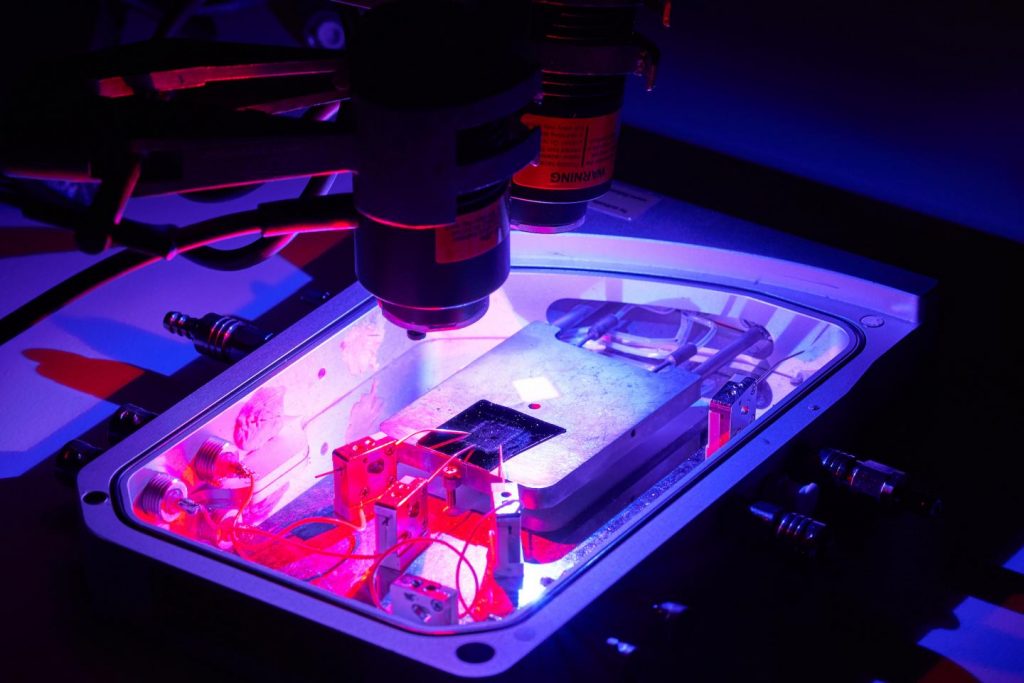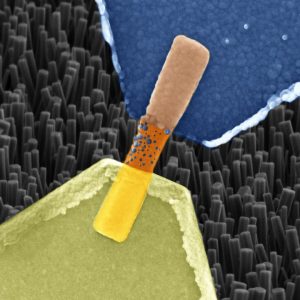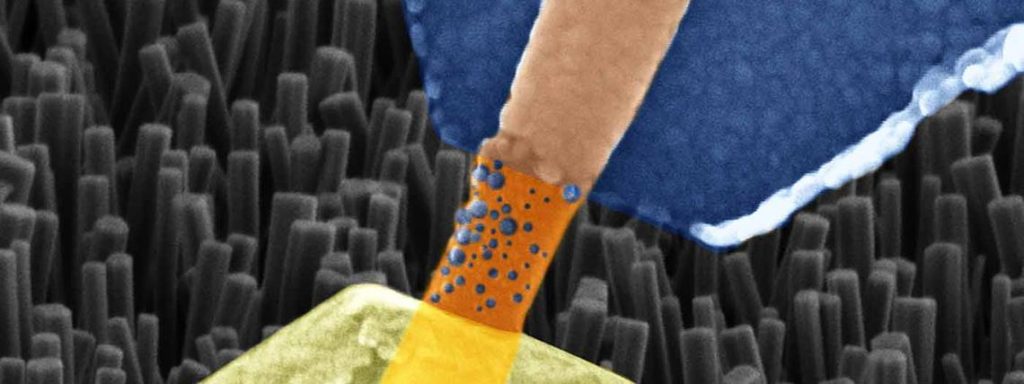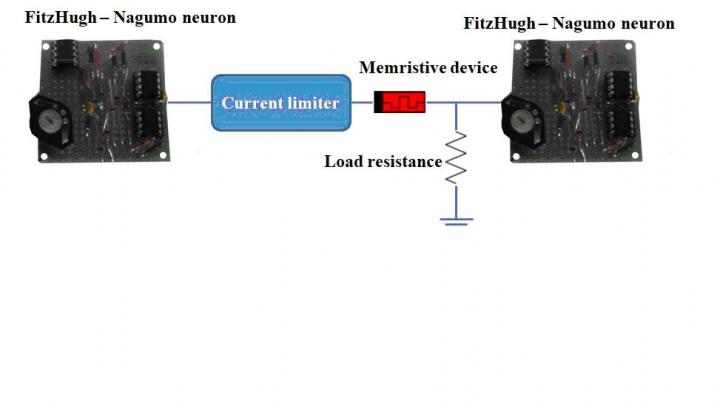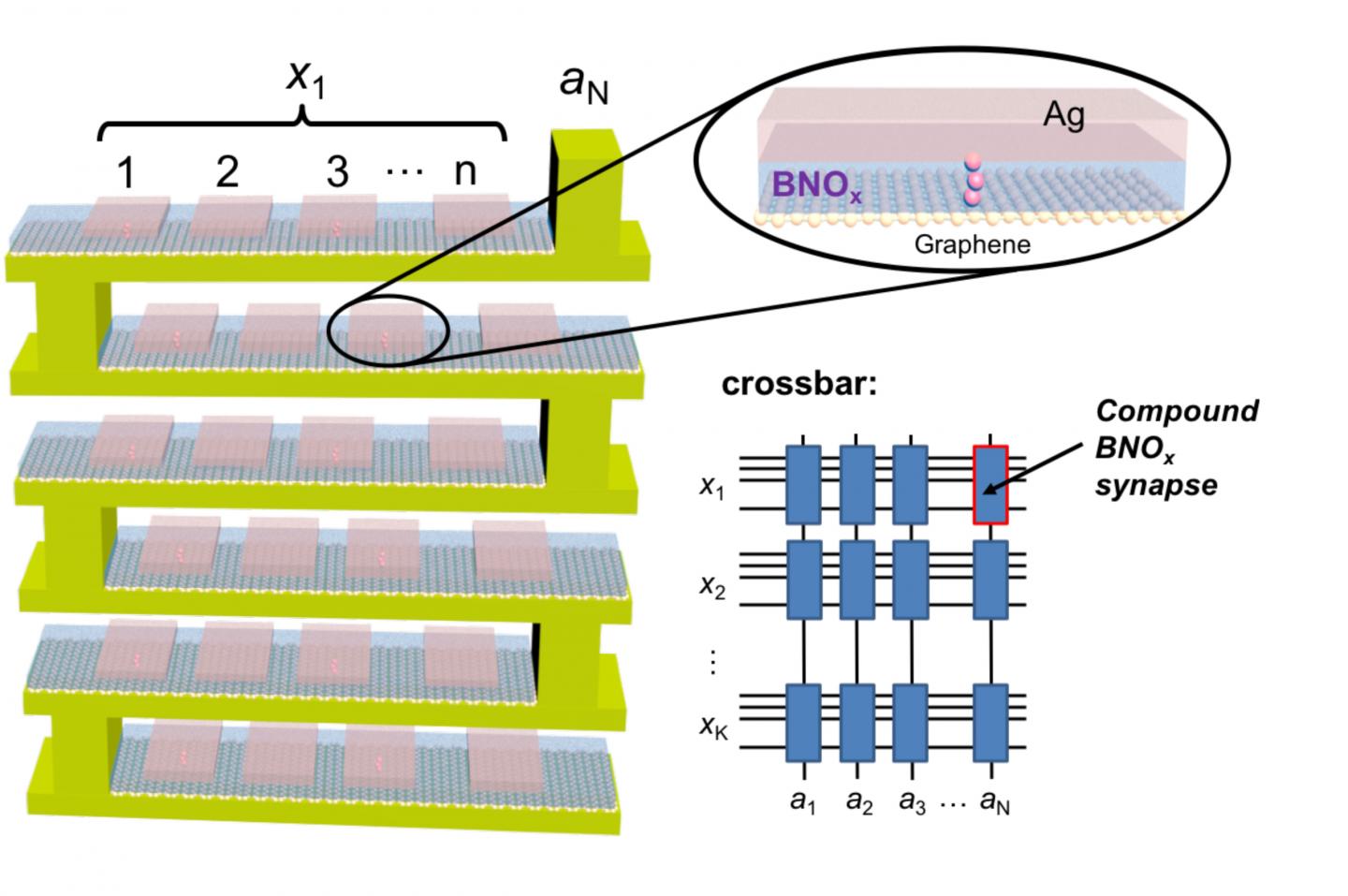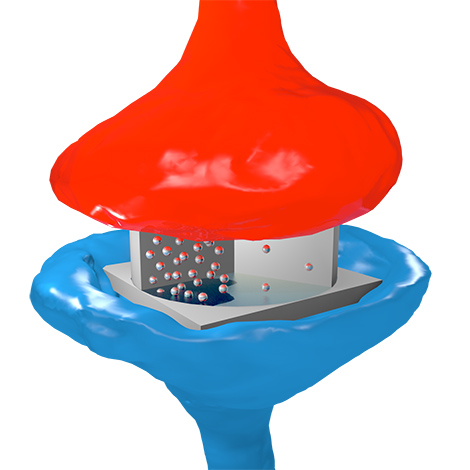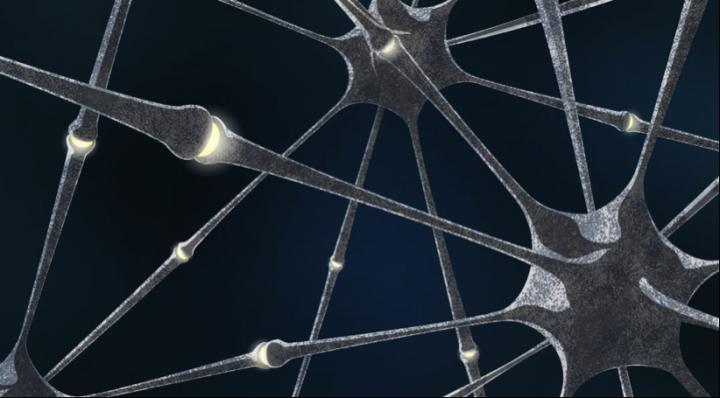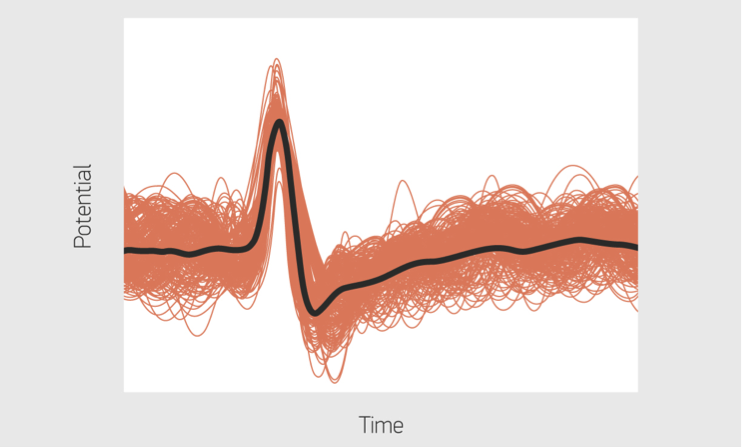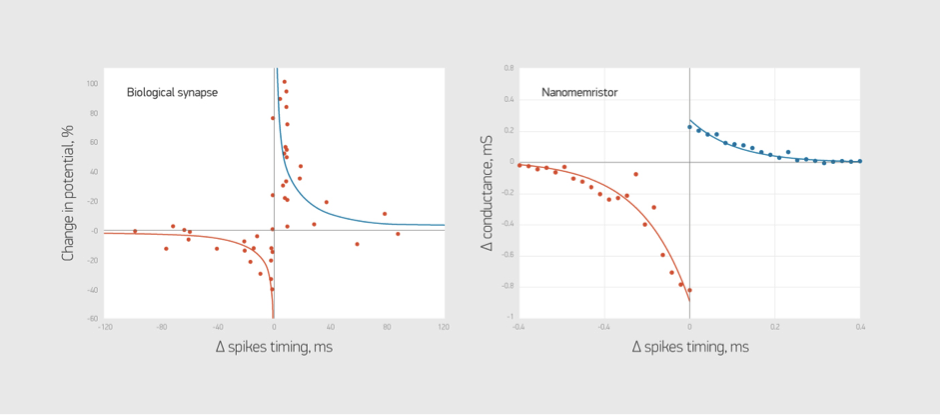No brain but it learns, it has about 720 sexes, and it travels at a rate of approximately 4 cm (1.6 inches) per hour, it is known as ‘le blob’. Fascinated when I first stumbled across the news, I had to post this piece but wish I hadn’t waited so long.
An October 18, 2019 Thomson Reuters news item on the CBC (Canadian Broadcasting Corporation) news website features more information,
A Paris zoo is showcasing a mysterious creature dubbed the “blob,” a yellowish collection of unicellular organisms called a slime mold that looks like a fungus, but acts like an animal.
This newest exhibit of the Paris Zoological Park, which goes on public display on Saturday [October 19, 2019], has no mouth, no stomach, no eyes, yet can detect food and digest it.
The blob also has almost 720 sexes, can move without legs or wings and heals itself in two minutes if cut in half.
…
The following video is in French but English subtitles are included,
Mike McRae offers more information in an October 17, 2019 article for Science Alert (Note: Links have been removed),
…
Here’s the 101: the 900-odd species of slime mould, of which P. polycephalum is just one, are a taxonomic headache. They’re currently boxed into the Protista kingdom, because where else are you going to put something that isn’t a fungus, plant, bacteria, or animal?
When life is good, they tend to live solitary lives as single cells like amoeba.
On occasion they squish together, forming a wide, branching structure called a plasmodium that can cover several square metres as they search cities to conquer. Well, bacteria to digest at least.
If you thought your experience on Tinder was hard, dating for slime moulds is a nightmare. Cells can only mix-and-match their genetic material if each has a compatible set of genes called matA, mat B, and mat C, each with up to 16 variations.
But the truly fascinating part is their ability to sense and rapidly adapt to their environment – a behaviour we might, for lack of a better word, call learning.
…
I have more about how ‘le blob’ learns. (All of this about learning and memory brings neuromorphic, sometimes called brain-like, computing to mind. My latest on that subject is a February 13, 2020 posting.) From a December 21, 2016 news item on ScienceDaily,
It isn’t an animal, a plant, or a fungus. The slime mold (Physarum polycephalum) is a strange, creeping, bloblike organism made up of one giant cell. Though it has no brain, it can learn from experience, as biologists at the Research Centre on Animal Cognition (CNRS, Université Toulouse III — Paul Sabatier) previously demonstrated. Now the same team of scientists has gone a step further, proving that a slime mold can transmit what it has learned to a fellow slime mold when the two combine. These new findings are published in the December 21, 2016, issue of the Proceedings of the Royal Society B.
Imagine you could temporarily fuse with someone, acquire that person’s knowledge, and then split off to become your separate self again. With slime molds, that really happens! The slime mold — Physarum polycephalum for scientists — is a unicellular organism whose natural habitat is forest litter. But it can also be cultured in a laboratory petri dish. Audrey Dussutour and David Vogel had already trained slime molds to move past repellent but harmless substances (e.g. coffee, quinine, or salt) to reach their food. They now reveal that a slime mold that has learned to ignore salt can transmit this acquired behavior to another simply by fusing with it.
To achieve this, the researchers taught more than 2,000 slime molds that salt posed no threat. In order to reach their food, these slime molds had to cross a bridge covered with salt. This experience made them habituated slime molds. Meanwhile, another 2,000 slime molds had to cross a bridge bare of any substance. They made up the group of naive slime molds. After this training period, the scientists grouped slime molds into habituated, naive, and mixed pairs. Paired slime molds fused together where they came into contact. The new, fused slime molds then had to cross salt-covered bridges. To the researchers’ surprise, the mixed slime molds moved just as fast as habituated pairs, and much faster than naive ones, suggesting that knowledge of the harmless nature of salt had been shared. This held true for slime molds formed from 3 or 4 individuals. No matter how many fused, only 1 habituated slime mold was needed to transfer the information.
To check that transfer had indeed taken place, the scientists separated the slime molds 1 hour and 3 hours after fusion and repeated the bridge experiment. Only naive slime molds that had been fused with habituated slime molds for 3 hours ignored the salt; all others were repulsed by it. This was proof of learning. When viewing the slime molds through a microscope, the scientists noticed that, after 3 hours, a vein formed at the point of fusion. This vein is undoubtedly the channel through which information is shared. The next challenges facing the researchers are to elucidate the form this information takes, and to test whether more than one behavior can be transmitted simultaneously. If Slime Mold A learns how to ignore quinine and Slime Mold B to ignore salt, the biologists wonder whether both behaviors can be transmitted and retained through fusion.
Here’s a link to and a citation for the paper published in 2016,
Direct transfer of learned behaviour via cell fusion in non-neural organisms by David Vogel and Audrey Dussutour. Proceedings of the Royal Society B: Biological Sciences Volume 283 Issue 1845 DOI: https://doi.org/10.1098/rspb.2016.2382 Published:28 December 2016
This paper is open access.
The 2016 work was followed by research announced in an April 22, 2019 CNRS (Centre National de la Recherche Scientifique; France) press release on EurekAlert (the press release is in French but the research has been published in English and I’m including the abstract from the paper after this press release),
Le blob est un organisme unicellulaire complexe mais dépourvu de système nerveux. Celui-ci est capable d’emmagasiner une connaissance et de la transmettre à ses congénères mais la manière dont il procède demeurait un mystère. Des chercheuses et chercheurs du Centre de recherches sur la cognition animale (CNRS/UT3 Paul Sabatier)* viennent de montrer que le blob apprend à tolérer une substance en l’absorbant.
Cette découverte découle d’une observation : les blobs s’échangent de l’information seulement lorsque leurs réseaux veineux fusionnent. Dans ce cas-là, la connaissance circule-t-elle au travers de ces veines ? Dès lors, la substance à laquelle le blob s’habitue constitue-t-elle le support de sa « mémoire » ?
Dans un premier temps l’équipe de scientifiques a entrainé des blobs à traverser des environnements salés pendant six jours dans le but de les habituer au sel. Par la suite, elle a évalué la concentration en sel au sein de ces blobs : ceux-ci en contenaient dix fois plus que les blobs « naïfs ». Les chercheurs les ont alors placés dans un environnement neutre et ont observé qu’ils excrétaient le sel qu’ils contenaient au bout de deux jours, perdant de fait « la mémoire ». Cette expérience semblait donc indiquer un lien entre la concentration de sel au sein de l’organisme et la « mémoire » de l’apprentissage.
Pour aller plus loin et confirmer cette hypothèse, les scientifiques ont introduit dans des blobs naïfs la « mémoire » de l’habituation au sel en en injectant directement dans leurs organismes. Deux heures après, les blobs ne se comportaient plus comme des naïfs mais comme des blobs ayant subi un entrainement de six jours.
Lorsque les conditions environnementales se détériorent, les blobs sont capables d’entrer dans un état de dormance. Les chercheurs ont démontré qu’un mois après être entrés dans cet état, les blobs conservaient leur habituation au sel. Les blobs stockent en effet le sel absorbé pendant la phase de dormance et conservent ainsi la connaissance sur le long terme.
Les résultats de cette étude prouvent que la substance aversive pourrait constituer le support de la « mémoire » du blob. Les chercheurs essayent maintenant de comprendre si le blob peut mémoriser plusieurs substances aversives en même temps et dans quelle mesure il est capable de s’y habituer.
* Le Centre de recherche sur la cognition animale fait partie du Centre de biologie intégrative (CNRS/UT3 Paul Sabatier)
Here’s the abstract for the paper (the link and citation follow afterward),
Learning and memory are indisputably key features of animal success. Using information about past experiences is critical for optimal decision-making in a fluctuating environment. Those abilities are usually believed to be limited to organisms with a nervous system, precluding their existence in non-neural organisms. However, recent studies showed that the slime mould Physarum polycephalum, despite being unicellular, displays habituation, a simple form of learning. In this paper, we studied the possible substrate of both short- and long-term habituation in slime moulds. We habituated slime moulds to sodium, a known repellent, using a 6 day training and turned them into a dormant state named sclerotia. Those slime moulds were then revived and tested for habituation. We showed that information acquired during the training was preserved through the dormant stage as slime moulds still showed habituation after a one-month dormancy period. Chemical analyses indicated a continuous uptake of sodium during the process of habituation and showed that sodium was retained throughout the dormant stage. Lastly, we showed that memory inception via constrained absorption of sodium for 2 h elicited habituation. Our results suggest that slime moulds absorbed the repellent and used it as a ‘circulating memory’.
This article is part of the theme issue ‘Liquid brains, solid brains: How distributed cognitive architectures process information’.
Here’s the link and the citation for the 2019 paper,
Memory inception and preservation in slime moulds: the quest for a common mechanism by A. Boussard, J. Delescluse, A. Pérez-Escudero and A. Dussutour. Philosophical Transactions of the Royal Society B: Biological Sciences Volume 374 Issue 1774 DOI: https://doi.org/10.1098/rstb.2018.0368 Published:22 April 2019
This paper is open access.
Should you ever wish to find ‘le blob’, the Paris Zoological Park, known as the parc zoologique de Paris, is one of four establishments which comprise the totality of the Muséum national d’histoire naturelle in Paris. There are others outside Paris. (You can find more in the Muséum’s Wikipedia entry but it is in French.)
‘Le blob’ has its own webpage on the Muséum national d’histoire naturelle.
